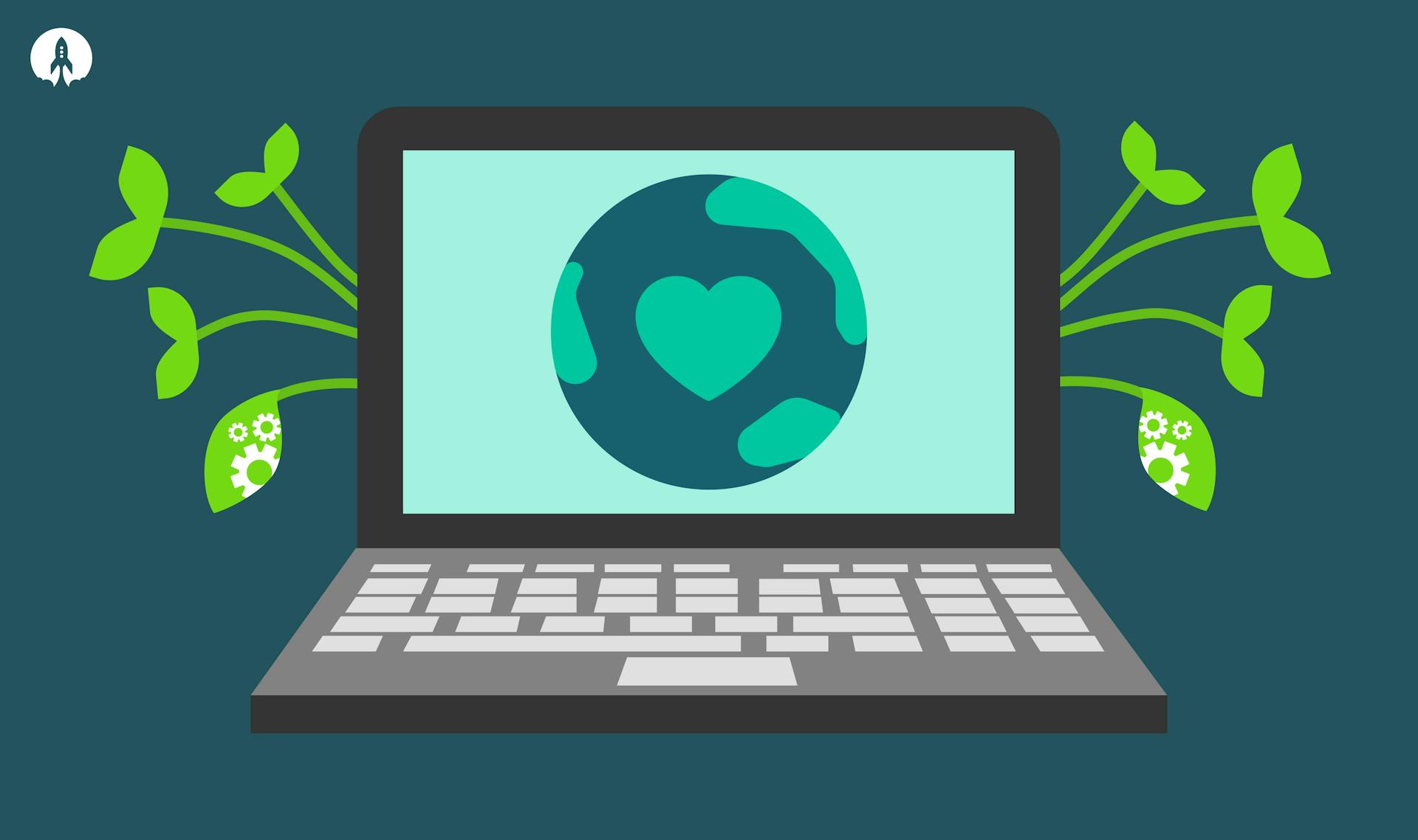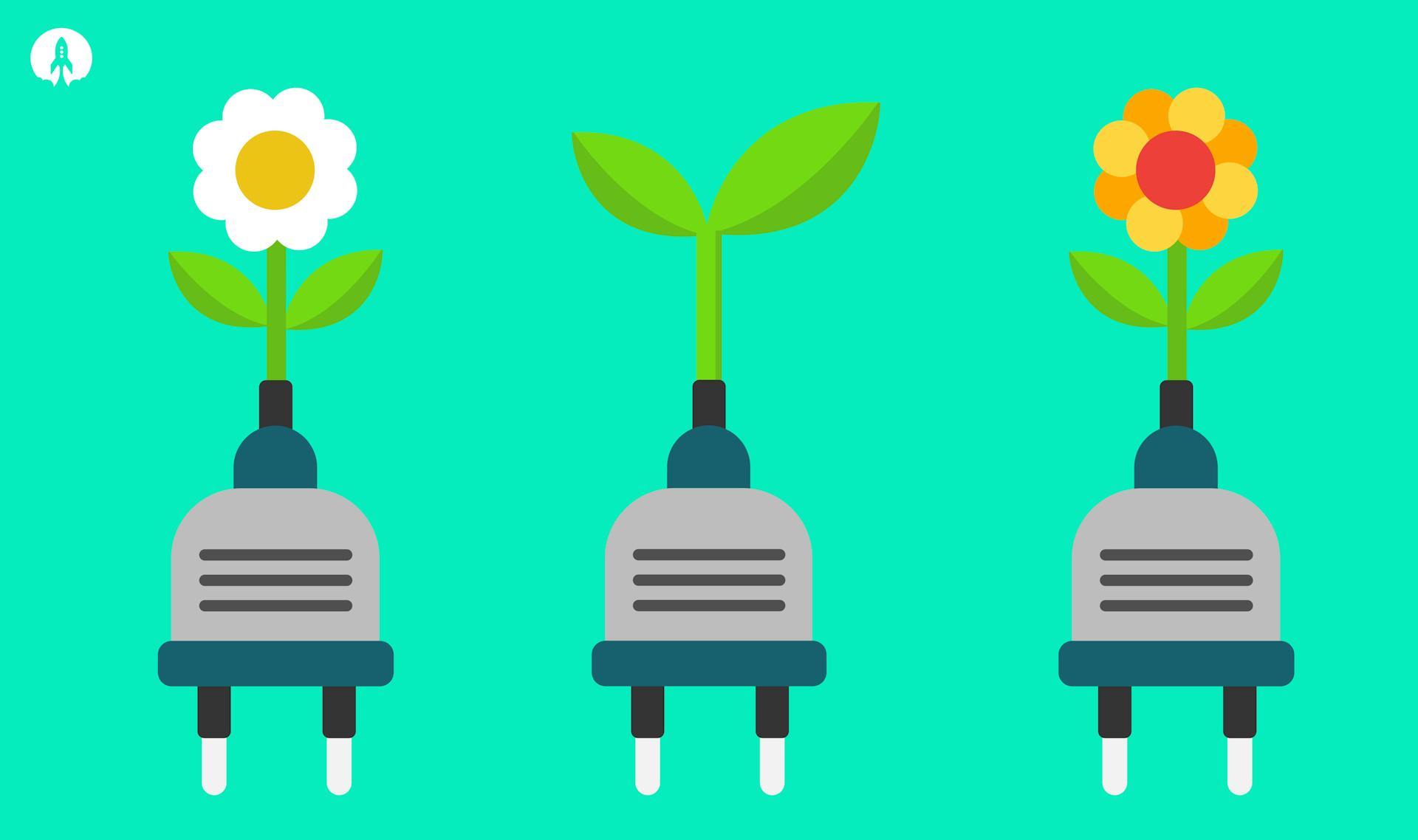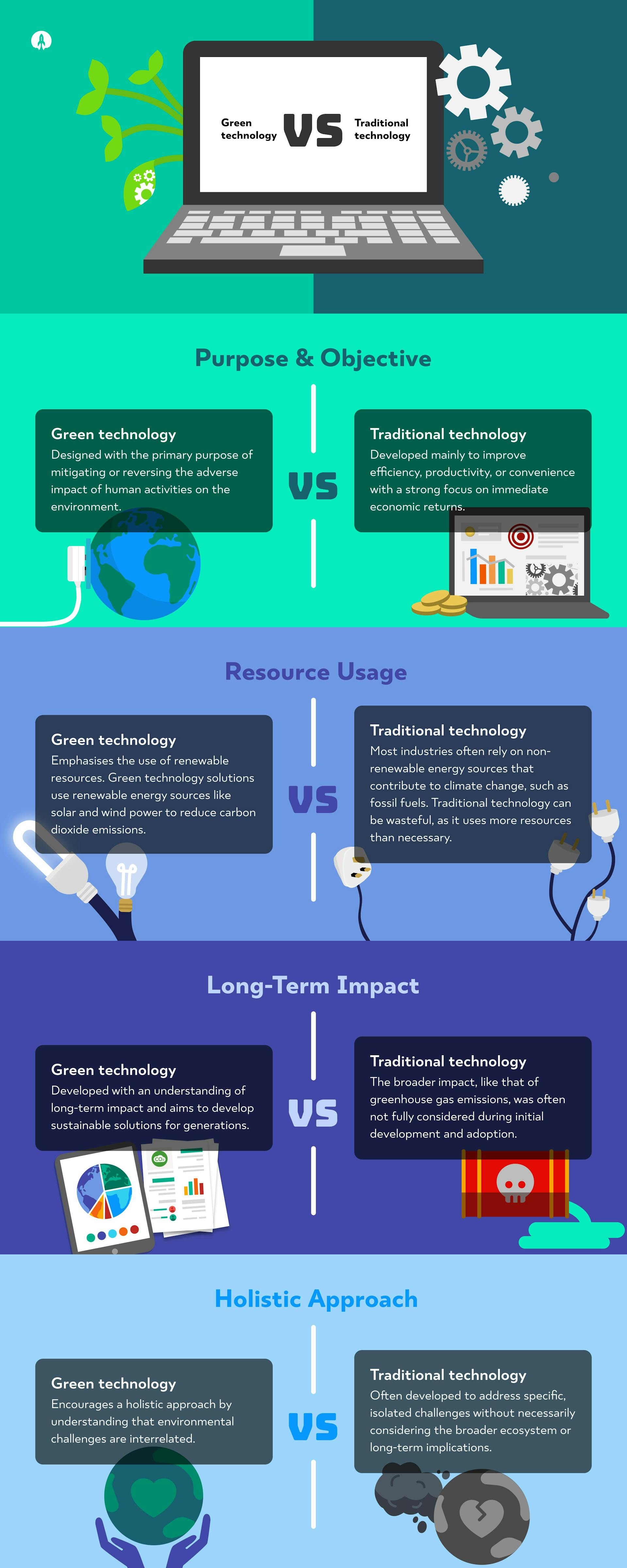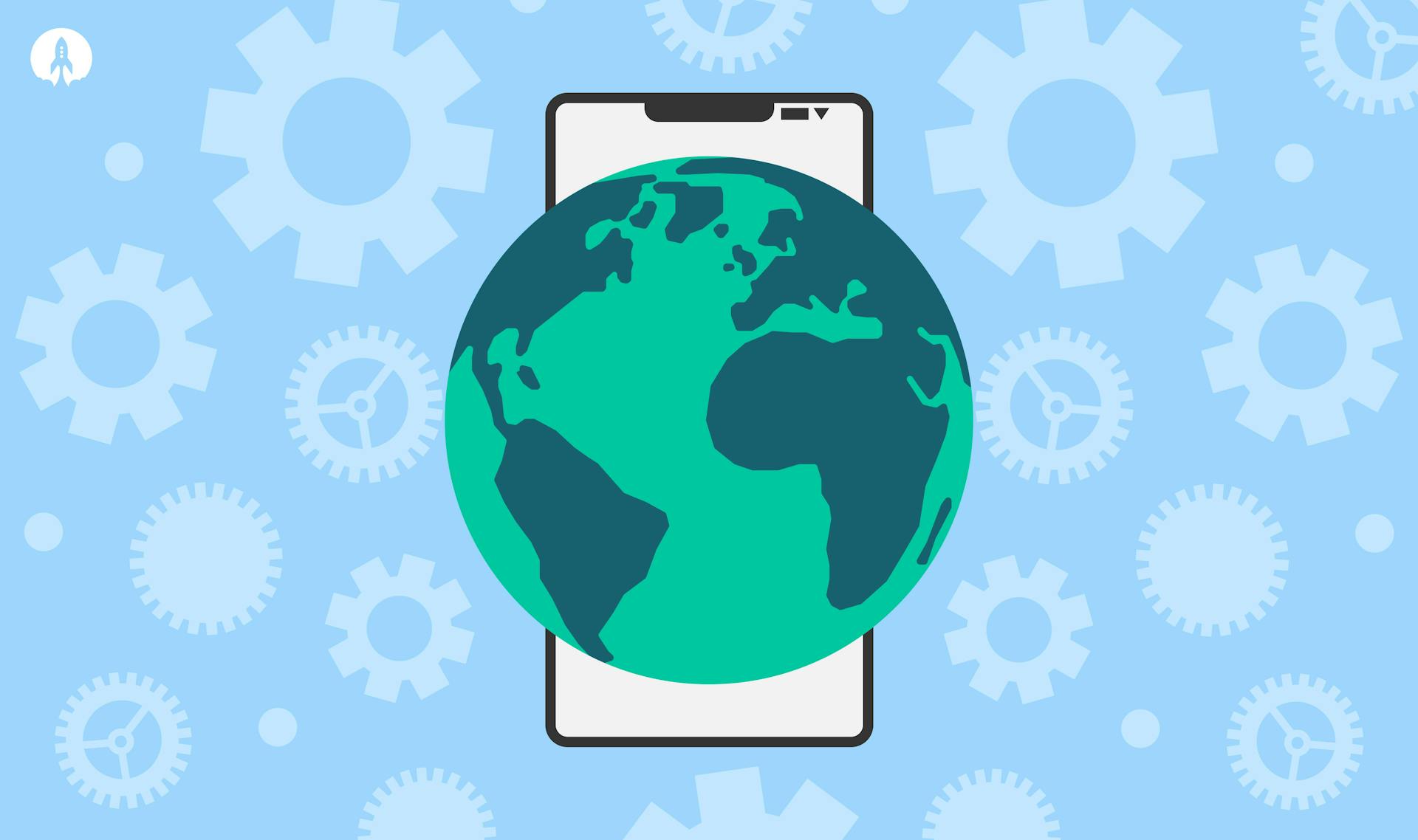The Definitive Guide To Green Technology In 2024

As the planet warms, innovative solutions to our environmental problems are now more necessary than ever.
Green technology offers a solution to the problems we face with regard to global warming. We can protect the planet and find great business opportunities at the same time. It’s a win win situation.
This article will explore everything you need to know about green technology. What it is, the benefits, and the different clean technologies.
We’ll also explore green software and uncover why green technology is not just a buzzword but the next big frontier for entrepreneurs ready to make a lasting impact and reduce our carbon output.

What Is Green Technology?
Simply put, green technology is a broad term for technologies designed to help protect the environment, reduce our impact on the planet, and reduce greenhouse gas emissions.
Green technologies can be used to produce energy, conserve resources, reduce pollution, and improve efficiency. Some examples of green technologies include solar panels, wind turbines, electric cars, and energy-efficient appliances.
Although the sector is relatively young, it's rapidly expanding as we come to terms with the challenges of climate change and its impact on the natural environment; green tech has emerged as one of the critical tools to address and mitigate these issues.
From 2022 to 2030, the worldwide market for green technology and sustainability is set to expand. In 2022, it was worth about $13.76 billion. By 2030, this number is predicted to jump to nearly $62 billion.
This means it'll grow by an average of 20.8% annually between 2023 and 2030, which makes the sector an excellent opportunity for businesses looking to create or invest in innovative technologies.
Below, we’ll dive deeper into the key goals of green technology to understand the scope and potential of this industry.
How It Differs from Traditional Technology
Traditional technology was developed mainly to improve efficiency, productivity, or convenience with a strong focus on immediate economic returns.
Green technology, on the other hand, whilst still having a strong focus on economic returns, also prioritises sustainability and looks at long-term environmental impact. These technologies aim to mitigate or reverse the adverse effects of human activity on the planet.
There are a few more ways that green technology differs from traditional technology:

Key Goals of Green Technology
🌱Environmental Sustainability
The first aim of green technology is sustainability. Environmental sustainability revolves around the idea that we should use our natural resources to meet today's needs without compromising future generations' ability to meet their own needs.
To this end, green tech seeks to develop tools, methods, and processes that allow industries and individuals to operate harmoniously with the environment. Whether it’s sustainable agricultural practices that don't degrade soil quality or technologies that reduce water consumption, the idea is that there should be balance.
🌱Renewable Energy
Unlike finite resources that deplete over time (like fossil fuels), renewable energy resources naturally replenish themselves or they can be regenerated as needed, such as sunlight, wind or geothermal energy.
The emphasis here is on energy production that harnesses and relies on renewable resources. This includes technologies like solar panels that capture and convert sunlight into electricity, or wind turbines that produce electricity from wind movement.
Power generated from a sustainable energy source means we are less reliant on fossil fuels and we’re able to reduce energy costs; both of these factors make the energy landscape much more sustainable. Renewable energy systems also have the benefit of reducing greenhouse gas emissions.
🌱Waste Management
Waste management is about minimising the amount of waste produced in the first place and then effectively managing and repurposing any waste that is generated. This is what's known as a circular economy.
💡What is a Circular Economy?
In a circular economy, products are designed to last longer, be repaired easily, and be recycled or upcycled at the end of their life cycles.
This approach uses fewer new materials and creates less waste, which improves the economy and the environment. It's a big change in our thinking, one that focuses on keeping and fixing items instead of just buying and throwing them away.
🌱Energy Efficiency
Energy efficiency refers to using less energy to perform the same task to reduce energy waste. This has two benefits: one is that you can save on energy costs, and the follow-on benefit is that it reduces your carbon footprint.
This goal has a wide range of applications. From software that uses less electricity without compromising performance to retrofitting buildings to reduce heating and cooling needs – the emphasis is on doing more with less.
Energy-efficient technologies reduce individual and industrial energy consumption, lessen the strain on power grids, and decrease greenhouse gas emissions.
Green technology is all about creating solutions that are gentler on our environment. This means harnessing energy from renewable sources, producing less waste, and making devices and processes more energy-smart.
This field presents a golden opportunity for businesses: it's not only in high demand due to growing environmental concerns but also a space ripe for innovation.
Now that we’ve explored what green tech is and what its key aims are, the next section will delve deeper into the applications of green technology.

Types of Green Technology
✔️Clean Energy
We must embrace innovative green energy solutions to cut down our carbon emissions. Alternative energy taps into nature's renewable resources to produce electricity. Let's explore some of the primary options:
⚡Solar energy: Solar power harnesses energy from the sun's rays by capturing it with photovoltaic cells and converting it into usable electricity.
⚡Wind energy: Wind turbines capture the wind's kinetic energy and convert it into electricity. They can be located onshore or offshore, with offshore turbines typically catching stronger, more consistent wind.
💡Insight: According to the International Energy Agency (IEA), solar and wind power are the most affordable renewable energy sources and they are becoming more affordable every year. Both energy sources are significantly cheaper than fossil fuel alternatives.
⚡Hydroelectricity: Hydroelectric power stations use flowing water to turn turbines, which generates electricity. The most common type is a dam on a river that acts as water in a reservoir; when released, the water flows through turbines, which produces electricity.
⚡Geothermal energy: This renewable energy taps into the Earth's internal heat by harnessing steam or hot water from beneath the Earth's surface to generate electricity.
⚡Tidal energy: This technology harnesses the energy generated by the gravitational pull of the moon and the sun on our oceans. Tidal systems capture the kinetic motion of currents caused by tides or the potential energy from differences in height between high and low tides (or both) to produce electricity.
✔️Electric Vehicles
Electric vehicles are an essential part of a green future. They are powered by electricity, so there are zero emissions.
That is not to say they run entirely green. The environmental benefits of electric vehicles are compromised if the electricity used to charge them comes from non-renewable sources like coal.
✔️Vertical Farming
One of the biggest causes of climate change is farming. So, there is a need for more sustainable agriculture that embraces more ecologically sound practices.
Vertical farming has evolved as a solution. Vertical farming involves growing crops in stacked layers, often within urban environments like high-rise buildings or repurposed warehouses.
Inside a warehouse, you can control the light and temperature to facilitate year-round food production.
Also, by growing crops vertically, it’s possible to produce more food in smaller areas, which reduces the need for extensive land use and long-distance transportation. This conserves space and offers a sustainable solution to meet the rising food demands of growing urban populations.
✔️Recycling
Another common green tech is collecting and processing materials that would otherwise be thrown away as trash and turning them into new products. It's a crucial element in reducing the volume of waste sent to landfills and conserving natural resources.
✔️Carbon Capture
This emerging technology is designed to capture and store (or utilise) carbon dioxide emissions from power plants or industrial facilities. Carbon capture aims to prevent CO2 from entering the atmosphere and contributing to global warming.
Green technology is full of exciting innovations, with much more to come. But no matter the type, they typically all share one thing: a need for software. At Rocketmakers, this is what gets us truly excited.
In the following section, we'll delve into the role of software in green technology and highlight some pioneering projects we've had the privilege to work on.

The Role of Software in Green Technology
A new frontier is emerging in green tech: green software. At its core, green software is all about creating digital solutions that reduce our negative impact on our planet. For us at Rocketmakers, green software has two dimensions:
🌳Eco-friendly software: It’s about designing, developing, and using software to minimise technology's carbon footprint. Think of it as sustainable fashion applied to the digital universe. This could be software that requires less energy to run or apps optimised for energy-saving modes.
🌳Impactful digital products: Beyond the tech side, green software products aim to create a positive environmental and social impact. Think along the lines of an app that helps track your daily carbon emissions. Or perhaps a tool to optimise your home’s solar panels? That’s the magic we’re talking about!
Let’s dive in and explore how green software can save the planet and become a game-changer in the tech market.
The Environmental Benefits of Green Software
The primary goal of green software is that it's designed to reduce the environmental impact of software development and use, from reducing energy consumption to minimising waste. Here are four factors that can reduce the carbon footprint of the software we develop:
- Using a major cloud provider: Running code on a computer requires energy, so the efficiency of that computer makes a big difference. Typically, running software on the cloud is more efficient than maintaining servers directly. However, this does depend on various factors, including the size and location of the data centre being used and the sourcing of energy by the cloud provider.
There are three major cloud providers: Google Cloud, Microsoft Azure, and AWS. Google Cloud is 1.5x more efficient than a typical data centre and runs on 100% renewable energy. Microsoft Azure and AWS (despite a less than stellar reputation among developers) are not far behind, with commitments to be run by 100% renewable energy by 2025.
- Considerate data architecture: Instead of processing vast amounts of unnecessary data, which consumes more energy, green software focuses on handling only what's crucial by optimising algorithms for minimal data use.
- Writing more efficient code: Efficient coding practices lead to faster and more responsive software and ensure that the software uses fewer system resources. This means that servers, computers, and devices don't have to work as hard, which leads to energy savings and prolonged hardware life.
For more information on how to develop code whilst minimising your carbon footprint, take a look at our article on four ways to reduce your code’s carbon footprint.
💡Expert insight:
Digital Products with a Purpose
Green software is more than just code optimisation; it's about integrating environmental consciousness at the core of digital solutions. Here's how green software can make a positive impact on the planet:
➡️Education: Many green software applications offer features that educate users about sustainable practices. This could be in the form of interactive tutorials, real-time carbon footprint trackers, or even simple eco-tips that pop up from time to time.
➡️Sustainable decision-making: Some applications prompt users to make eco-friendly choices. For example, a travel booking app might highlight sustainable transport options or eco-friendly accommodations and guide users to make decisions with a lower environmental impact.
➡️Integration with other green tech solutions: Green software often seamlessly integrates with other environmentally friendly technologies. A smart home application might pair with solar panels, which could provide users with real-time data on energy generation and suggest optimal times to use certain appliances for maximum energy efficiency. A great example of this type of green technology app is enModus.
Or you might need an app like Sero to manage the integration between renewable energy, low-carbon technology, and battery storage systems.
➡️Resource monitoring: To help users understand their consumption habits, green software can offer detailed breakdowns of resource use. Think of apps that monitor water, electricity, or gas usage, and provide insights and suggestions to reduce waste.
➡️Carbon offsetting features: Some apps, like Coco+, come equipped with features that allow users to invest in carbon offset projects, which provides them with tangible ways to compensate for their carbon emissions.
➡️Optimised power consumption: Green software can also manage device power usage more effectively, which ensures that apps and processes don't drain more energy than necessary. Prime examples include adaptive screen brightness, energy-saving modes, and efficient background task management.
Green software integrates features designed to merge the best of tech innovation with eco-conscious living by offering users insights and tools that enable them to make environmentally-friendly choices in their everyday digital activities.
💡Want to explore more applications of green software? Look at some of the projects we’ve worked on here.
🚀Rocketmakers: Experts in Green Tech
The message is clear: it's not all about challenges – green tech offers bright opportunities. For innovative corporations, start-ups, and industry leaders, the door is wide open to innovate and drive positive change.
Since our inception, Rocketmakers has been passionate about projects that make a real difference, especially in the environmental space. If you have a green tech idea, our team stands ready to help transform it into reality.
Are you thinking of taking the next step? Get in touch with us today to see how we can help your company skyrocket!



